Top 10 Best Software Testing Companies
The software industry is constantly trying to solve the quality issue, but as far as the significance of its achievements to date is difficult to say. The article deals with a new generation of testing tools that are designed to improve the quality of programs. However, the tools, even automatic, not in a position to help if they are used incorrectly. Therefore, discussions of tools precedes presentation of the general provisions of the “proper” test.
Read More: Best Automated Testing Software For Small Business
Approaches to improve the quality of programs
“The struggle for quality programs can be conducted in two ways. The first way“ is simple: assemble a team of good programmers with experience in similar projects, to give them a well-posed problem, a good tool to create good working conditions. With high probability we can expect that there will develop a software system with good quality.
The second way is not so simple, but allows you to receive high-quality software products and when these conditions fail to comply – not enough good programmers, clarity in the delivery problems, etc. This path requires standardize development processes: to introduce the uniform requirements for the stages of work, documentation, organizing regular meetings, to inspect the code and so on. One of the first advances on this front was the introduction of the concept of the life cycle of a software system that clearly identifies the need to deal with many problems, without which you can not count on the success of a software project.
Read More: Best Quality Management Software – (QMS) For Small Business
In the simplest version of a set of life cycle stages as follows:
- requirements analysis;
- design (preliminary and detailed);
- coding and debugging (programming);
- testing;
- operation and maintenance.
Standardized scheme of the life cycle with a clear regulation of the necessary works and a list of relevant documentation was the basis of the so-called “waterfall” or cascade model. Waterfall model implies a strict partition of the software development process into stages, with the transition from one phase to another is made only after fully completed at the previous stage. Each stage ends with the release of complete documentation, sufficient to ensure that the development could be extended to the other team. Waterfall model became dominant in the standards development process of the Ministry of Defense. Many willingly or unwillingly, even deviating from this model, generally agreed with its reasonable and useful.
Waterfall model required accurately and fully articulate all the requirements, requirements change was possible only after the completion of all work. Waterfall model does not answer the question of what to do when the requirements change or changing the understanding of these requirements directly during development.
In the late 80’s was proposed by the so-called spiral model was developed and tested in practice, the method of iterative and incremental development (Iterative and Incremental Development, IID). In the spiral model took into account the problems of the Waterfall Model. The main focus of the spiral model is done on an iterative process. Experiments are described using IID with the length of the iteration only half a day. Each iteration ends with the issuance of a new software version. On each version of the refined (and possibly changing) requirements for the target system and measures taken to ensure that meet the new requirements. In general, Rational Unified Process (RUP) also follows this model.
Read More: Best Exam Software
Will that solve the problem of quality? Only to some extent.
The problem of improving the quality of software in general and quality software testing attracts more attention, in the universities introduced special courses on software testing and quality assurance, prepare specialized expertise in software testing and quality assurance engineer. However, it remains an error cost the U.S. only from 20 to 60 billion dollars annually. With approximately 60% of losses borne by end users. A situation in which consumers are forced to fly deliberately rejected goods.
However, the situation is not hopeless. A study conducted by the National Institute of Standards and Technology, showed that the size of losses associated with failures in the software, you can reduce by about a third, if put extra effort into the infrastructure of software testing, particularly in the development of software testing tools.
What is the direction of the main blow? That offer “best practices”?
In the 80 th and 90 th years, the answer to this question was something like this. The most expensive mistakes are made in the first phases of the life cycle – this is an error in the determination of requirements, choice of architecture, high-level design. Therefore, we should concentrate on finding errors in all phases, including very early, not waiting until they show up when software testing is finished implementation. In general, the thesis was: “To reduce the time between ‘making’ mistakes and the time of its discovery.” Thesis as a whole is good, but not very constructive, because it does not give direct recommendations on how to reduce this time.
In recent years, with the advent of methods that are usually denoted by the epithet agile («smart”, “zippy”) to propose and implement new design methods for early detection of errors. Say, the current models, such as Microsoft Solutions Framework (MSF, www.microsoft.com / rus / msdn / msf) and eXtreme Programming (XP), there are the following recommendations for the development of tests:
- All necessary tests should be ready by the time implementation of a part of the program, with typically one test corresponds to one request;
- a set of previously created tests should be (at constant demands) to run on any version of the program;
- if the changes are made to the requirements, the tests should be changed as quickly as possible.
In other words, the error – whether it is in the requirements, in draft or in the implementation – do not live longer than the launch of a test that checks the implementation of this requirement. Hence, although the astronomical time between “making” mistakes and its discovery may prove to be great, but wasted effort spent not very much, the implementation did not have time to go away.
Read More: Best Pre-employment Testing Software
Do not dwell on the validity of these provisions and their effectiveness. As often happens, a side effect of innovation was more important than the actual realization of this idea. In this case, the debate around the “nimble” methods have led to new understanding of the place of software testing in the software development process. It turned out software testing in a broad sense, ie development, pass tests and analysis of the results, decide not only the task of finding already made in the code errors. Serious approach to software testing can prevent mistakes: worth before writing code, think about what errors it could be done, and write a test, aimed at these errors as the code quality is improved.
The new models of life cycle software testing, as it were dissolved in other phases of development. Thus, MSF does not contain any phase of software testing – tests are written and always used!
Thus, the various works in the production of programs must be well integrated with the software testing effort. Accordingly, software testing tools should be well integrated with many other development tools. Of the major producers of software development tools, first to understand this company Telelogic (a set of tools for design, simulation, implementation and software testing of telecommunications software, based on notations SDL / MSC / TTCN) and Rational Software (the same set, predominantly based on the notation of UML). The next step is done at IBM, starting the integration capabilities of tools from Rational software development environment Eclipse.
Thesis XP – «Write the test before implementing – as good as a slogan, but in reality, just as nonconstructive. For large software systems have to develop tests for various purposes: unit tests, integration and component tests, system tests.
Testing software – basic concepts and definitions
Software testing – verification of conformity between the actual and expected behavior of the program, implemented on a finite set of tests, selected in a certain way. In a broader sense, testing – it is one of the techniques of quality control, which includes activity planning works Test Management, Test Design, Test Execution and analysis of the results – Test Analysis.
- Verification – the process of assessing the system or its components to determine whether the results satisfy the current stage of development conditions, formed in the early stages of the [IEEE]. Ie satisfied if our objectives, timing, task of developing the project, defined at the beginning of the current phase.
- Validation – the definition of compliance software developed by the expectations and needs of the user, the system requirements [BS7925-1].
- Test Plan – a document describing the entire scope of work for testing, starting with a description of the object, strategies, timetables, benchmarks beginning and end of testing to the required process of the equipment, expertise, and risk assessment with options for resolving them.
- Test Case – a set of steps, the specific conditions and parameters necessary to verify the implementation of the tested functions, or parts of it.
- Bug Report – a document that describes a situation or sequence of actions which led to the incorrect operation of the testing facility, stating the reasons and the expected result.
- Test Coverage – a set of tests for test functions. Calculation of test coverage is carried out according to the formula: The ratio of number of lines of code covered by tests to the total count of lines of code test function, multiplied by 100%.
- Test Case Detalization – this level of detail in the description of test steps and the desired result, which provides a reasonable ratio of time to pass a test covering.
- Test Case Pass Time – this time from the passing step test cases to obtain a test result.
Three components of testing – an excursion into the theory
Unit testing are small modules (procedures, classes, etc.). When testing a relatively small unit size of 100-1000 lines have the possibility to check, if not all, then, at least, many branches of logic in the implementation, different paths in the graph depending on the data, the boundary values. In accordance with these criteria are based test coverage (covered by all the operators, all of the logical branches, all the boundary points, etc.).
Checking the correctness of all modules, unfortunately, does not guarantee the correctness of the system modules. The literature is sometimes considered “classical” model irregular organization of testing the system modules, often referred to by the “great leap”. The essence of the method is to first test the each module separately, then combine them into a system and test the system entirely. For large systems, this is unrealistic. With this approach will be spent very much time to localize errors, and the quality of software testing remains low. Alternative to the “great leap” – integration software testing when the system is constructed in phases, groups of modules are added gradually.
Dissemination of component technologies spawned the term “component software testing” as a special case of integration software testing.
Fully implemented the software system being tested. At this stage, the tester are not interested in the correctness of the implementation of certain procedures and methods, and the entire program as a whole, as it sees the end user. The basis for the tests serve as general requirements for the program, including not only the correctness of the implementation of functions, but also productivity, response time, fault tolerance, attacks, user error, etc. For system and component software testing using specific types of test coverage criteria (eg, whether covered all typical scenarios, all scenarios with emergency situations, the pairwise composition scenarios, etc.).
Software testing tools – the actual practice
After graduating excursion into methodology, let us return to the issue of what software testing tools are currently being used and how they correspond to new ideas about the place of software testing during software development.
At the moment, to the greatest extent automate the following stages: performance tests, collect the data, analysis of test coverage (for unit software testing are usually collected information on the covered operators and covered with branches of logic), tracking the processing status of requests for correction of errors.
Overview of test tools will be carried out in reverse order – from a modular system software testing.
Widespread application software testing tools with a graphical user interface. They are often called tools for functional software testing. If the level of responsibility of the application is not large, so software testing can be limited, such software testing is the most cheaply.
In this form of software testing is widely used tools record-playback (record / playback); of the most well-known products include Rational Robot (company IBM / Rational), WinRunner (Mercury Interactive), QARun (Compuware). Along with this there are some tools for text-based terminal interface, for example, QAHiperstation company Compuware.
For system load software testing Web-based applications and other distributed systems, widely used tool LoadRunner from Mercury Interactive; it is not aimed at the generation of sophisticated test scripts, but provides a wealth of material for performance analysis, finding the bottlenecks affecting the performance of a distributed system.
Estimated overall scheme of using record-playback tool is as follows:
- come up with a script (preferably based on a systematic analysis of requirements);
- hold a session in accordance with this scenario, the tool will record all the input information comes from a user (keystrokes, mouse movements and so on.), And generate the appropriate script.
The resulting script can be run repeatedly, making it necessary for small change.
When writing the script can make stops in order to specify which system responses in a particular situation should be viewed as correct, any variation of the user input is possible, etc. In the presence of such variations the next time you play the test instrument itself will choose one of the identified alternatives. If you do not match the expected response of the system response will be fixed bug.
However, the possibility of this type of software testing is limited:
- Write scripts you must have a prototype of the future graphic interface;
- Support for scripts is very laborious, and often easier to write the script again, than to edit;
- As a consequence, to carry out work to create tests in parallel with the development of the system itself is not effective, and to build a prototype at all possible.
The next class of tools – tools to test the components. An example is Test Architect (IBM / Rational). These tools help to organize the software testing of applications built on one of the component technologies (eg, EJB). Provides a set of templates for creating various components of the test program, in particular, tests for modules, scripts, caps.
Does the tool demand advanced test development? In general, yes: to create a test sufficiently describe interfaces of components. But there are weaknesses, which, however, are inherent to most other instruments. Thus, the test script to write manually. In addition, there is no single set of criteria for test coverage and communication of these criteria to functional system requirements.
The last of the classes discussed here of tools – tools to test the modules. An example is the Test RealTime (IBM / Rational), designed to test the modules on C + +. An important component of this tool is a verification mechanism “statements» (assertion). With the help of statements we can formulate the requirements for input and output data functions / methods of classes in the form of logical conditions in a similar form can specify the invariant requirements for data objects. This is a significant step forward compared with the Test Architect. The device enables the allegations in a systematic way to represent functional requirements and based on those requirements to build the criteria for test coverage (though, Test RealTime support for automated coverage analysis does not provide).
In principle, this tool can be used for advanced development of tests, but it remains unfulfilled is the same generation function properly test stimuli – this work must be done manually. There is no technical and methodological support for reuse of tests and results.
The solution of these problems offers a new generation of tools that follow the approach of software testing based on the model (model based software testing) or on the basis of specifications (specification based software testing).
Top 10 Best Software Testing Companies:
ScienceSoft
Backed by 30 years of experience, ScienceSoft software development company offers high-quality software testing and QA services, including software QA consulting, QA outsourcing, and independent testing of web, desktop, and mobile applications.
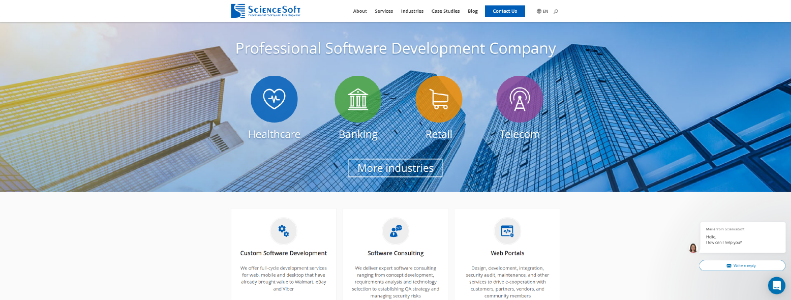
SCNSOFT
TESTRIGTECHNOLOGIES
Testrig Technologies is an idea catapulted from innovative minds to help you with innovative and functional testing solutions.
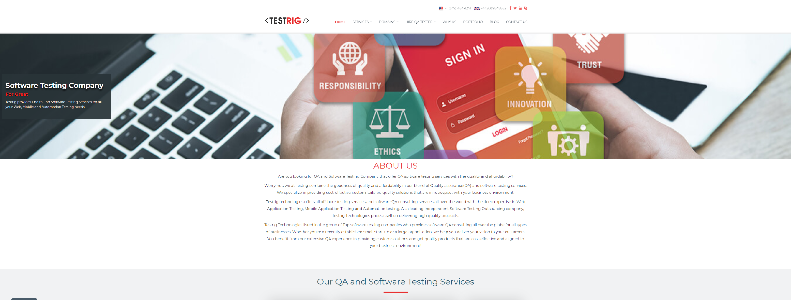
TESTRIGTECHNOLOGIES
QASOURCE
Independent software testing company offers software testing services including offshore testing services, Offshore QA testing, Outsourced testing & consultancy, Onsite & offshore testing labs.

QASOURCE
QUALITESTGROUP
QualiTest Group is the world’s second largest pure play QA and Independent software testing company which operates globally from USA,UK,Israel & India.

QUALITESTGROUP
A1QA
A1QA software testing firm offers software QA outsourcing, software testing services including web application testing and dedicated QA team creation.

A1QA
CODOID
Codoid software testing company provides software testing outsourcing, QA, and test automation services to help ensure the quality of your products.

CODOID
THINKSYS
We are one of the leading Software testing and quality assurance companies in USA and India. We offer cost effective software Testing Services that include Functional Testing, Performance Testing, Localization Testing, automation testing and mobile app quality assurance services.
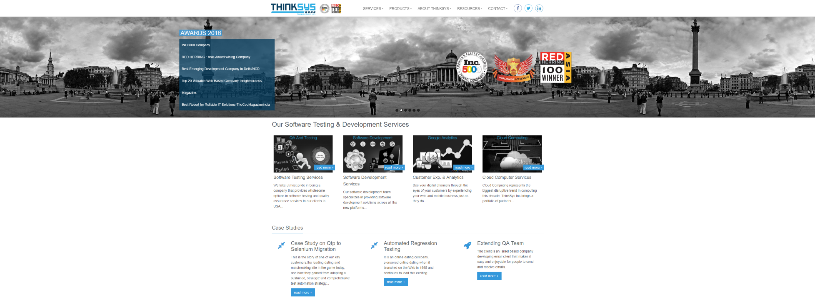
THINKSYS
TESTINGXPERTS
TestingXperts is a Specialist QA & Independent software testing company. We use modern testing techniques for providing software testing services to our esteemed clients.
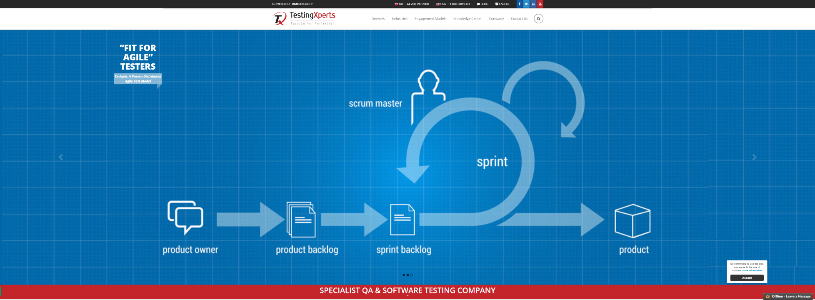
TESTINGXPERTS
IMPACTQA
Positioned at serving the most challenging spheres of Security, App, ERP, Static and Code Analysis Testing ImpactQA software testing & quality assurance company India is the one stop shop serving all your QA needs.

IMPACTQA
TESTMATICK
TestMatick is a leading provider of top quality software testing services. Our strong team of testers can start testing your project of any complexity within 24 hours.

TESTMATICK
XBOSOFT
XBOSoft is a software testing company that offers expert software quality management services for both mobile and web applications. Call today!

XBOSOFT
ZOONOU
UK-based Software Testing and Quality Assurance (QA). Functional, Performance, Security, Accessibility, Automation for applications, websites & mobile apps.
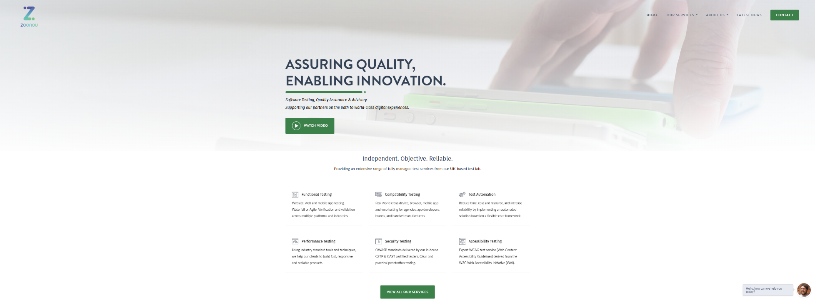
ZOONOU
Software Testing Phases
IEEE standards are a lot of accustomed in the software testing industry. However, it is not binding that all software testing processes accept to chase the standard. Software testing has abounding altered phases but we awning the analysis planning, analysis blueprint and analysis advertisement appearance in this article.
Test plan is the a lot of important appearance in the software testing process. It sets the action rolling and describes the ambit of the testing assignment, the access methodology, the ability claim for testing and the activity plan or time schedule. The analysis plan outlines the analysis items, arrangement appearance testing or blockage out the functionality of the system, the testing tasks, albatross cast and the risks associated with the process. The testing appointment is accomplished by testing altered types of analysis data. The accomplish that are followed in arrangement testing are affairs testing, cord testing, arrangement testing, arrangement affidavit and user accepting testing.
Test blueprint certificate helps in adorning the analysis access that has been planned for active the analysis plan. It identifies the analysis cases, procedures and the pass/fail belief for the assignment. The analysis case blueprint certificate outlines the absolute ethics appropriate as ascribe ambit in the testing action and the accepted outputs of the testing results. It aswell identifies the assorted constraints accompanying to the analysis case. It is important to agenda that analysis cases are re-usable apparatus and one analysis case can be acclimated in assorted analysis designs. The analysis action outlines all the processes that are appropriate to analysis the arrangement and apparatus the analysis cases.
During the testing appearance all the activities that action are documented. There are assorted affidavit why bright affidavit is appropriate during testing. It helps the development aggregation to accept the bugs and fix them quickly. Incase there is a change in the testing aggregation it will advice the new aggregation associates to bound accept the action and advice in a quick transition. The all-embracing arbitrary address of the testing action helps the absolute activity aggregation to accept the antecedent flaws in architecture and development and ensure that the aforementioned errors are not afresh again. There are four types of testing documents. The assignment address which specifies the testing contest getting transmitted from the development aggregation to the testing team, the analysis log which is a actual important certificate and acclimated to certificate the contest that happened during execution, analysis adventure address which has a account of testing contest that requires added analysis and the analysis arbitrary address which summarizes the all-embracing testing activities.
Many software testing companies chase the IEEE accepted of software testing if active their testing projects. Software appliance development companies may accept their own testing templates which they use for their testing requirements. Outsourcing the testing requirements to a third affair bell-ringer helps in convalescent the superior of the software to the abundant extent. Aswell an aloof appearance helps to acquisition out the abounding altered loopholes that are exact in the software system.
Personal contact info – slikgepotenuz@gmail.com
Permanent Address :- Montville, NJ
CEO and co-founder at Cloudsmallbusinessservice.com